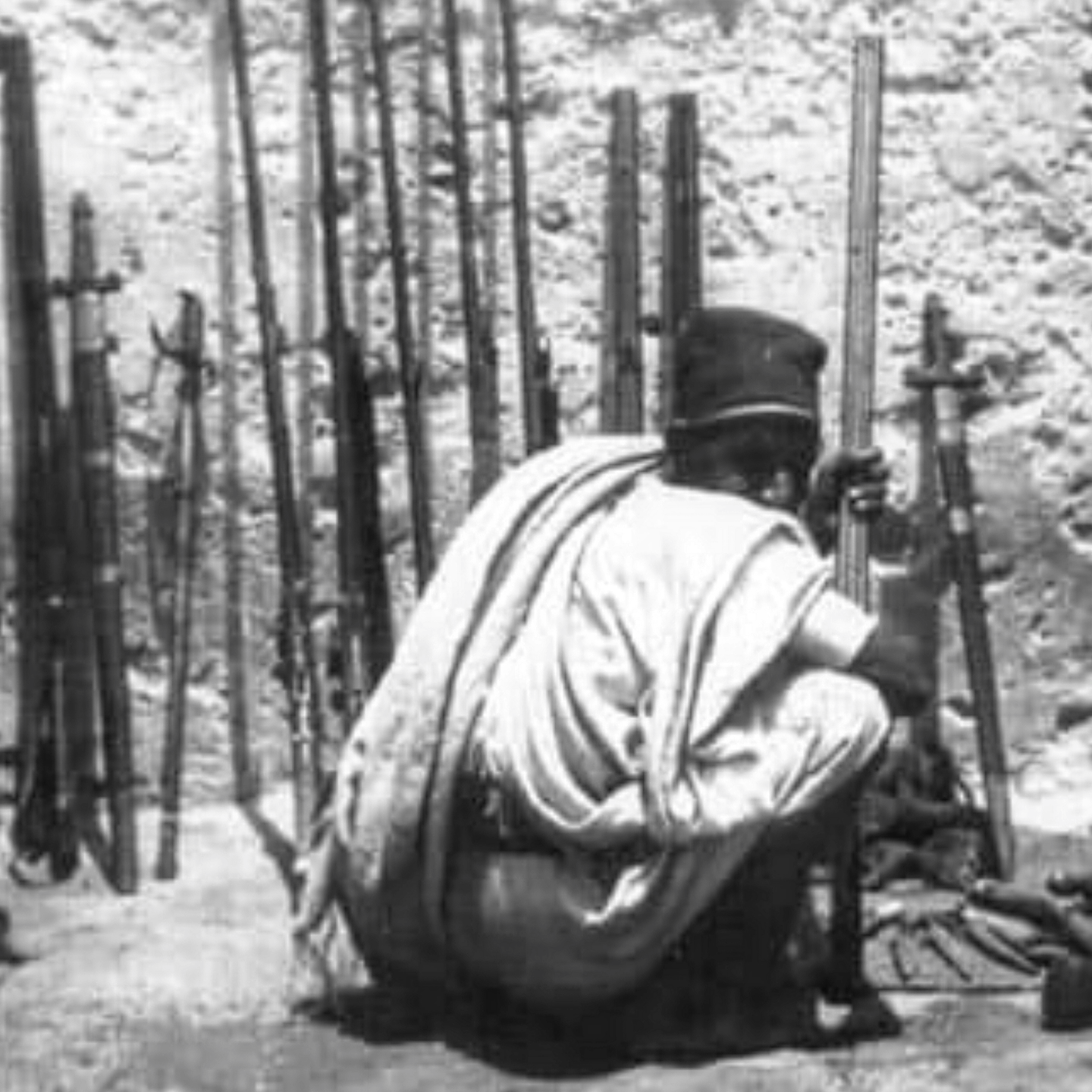A Rare Berber Sword
A Rare Berber Sword
Berber / Arab
Beylik of Tunis (Tunisia) - Ottoman Vilayet Tripolitania (Libya)
Last half 19th century (ca. 1880)
Iron, horn (bovine)
Blade: 95,3cm
Hilt & Blade: 116,5cm
Hilt, Blade, Sheath: -cm
Collection Date: 2024
Collection Number: 422
A rare sword from the Arab- Berbers of North Africa attributed to the Maghreb region near Tunisia and Libya, where these sword types were most prevalent. This one is an unique example with its European blade decorated in thuluth script.
The blade being a German trade blade of the 19th century. It boasts a broad, long, and straight double- edged iron blade with three central fullers spanning about half of the blade's length with the central fuller extending to the spear point end. Both outside edges acid- etched in thuluth calligraphy in entirety. Opposing crescent face moons (dukari) on each side about half length. The base stamped "W. Clauberg" and "Solingen" (Wilhelm Clauberg of Solingen: ca. 1847 - 1918). Bovine carved hilt with triangular shaped pommel and a large domed iron peened tang.
While the sword itself is certainly Berber in origin of Ottoman ruled Tunisia and Libya, mounted blades were almost always of European origin and sometimes much older than the hilts. These varieties included early rapier, European military saber, hunting hangers, and even in rare instances medieval blades, both traded and captured. The blade here is often seen on Maghreb takouba or Sudanese kaskara swords. Interestingly, it is decorated in thuluth with associations of Sufi Mahdist Sudan during the uprisings in the 1880s . Sudan was also subjected to vast slave trade where Northern Arabs would raid deep into Southern black areas, now South Sudan, C.A.R., and the Congo from Borno, Bagirmi, Wadai, Darfur, and Kordofan which hit its peak during the Mahdist era. Massive slave trade existed for centuries, and it is estimated that 1.2 million slaves were sent through the Sahara in the 19th century. In the 1830s, Ghadames (Tripolitania) was handling 2,500 slaves per year. Tripoli, around 4-5,000 annually, through Kanem-Bornu sources, one of the main routes being Benghazi-Wadai, specifically Tripolitania- Central Sudan.
Photograph 10: Tripoli Bazaar, 1898 - 1906.









